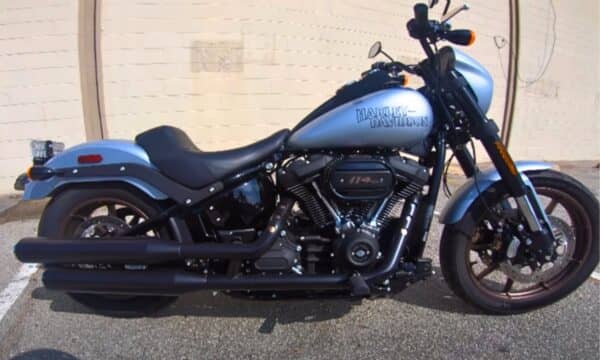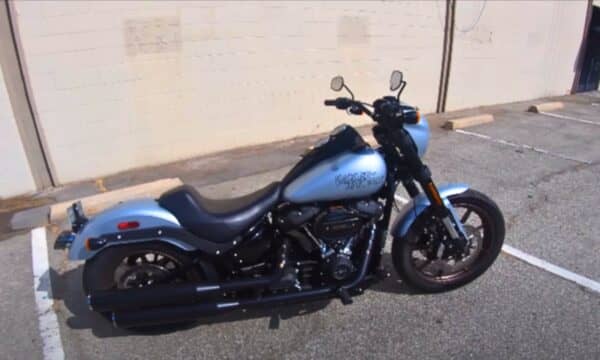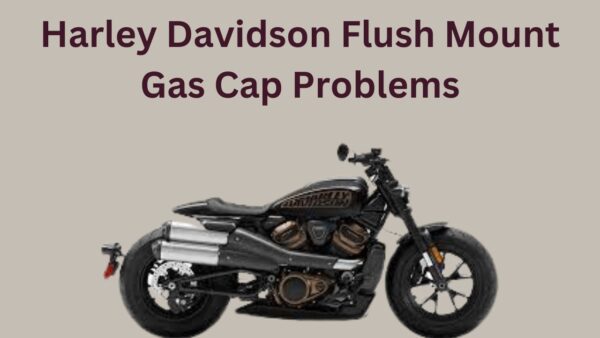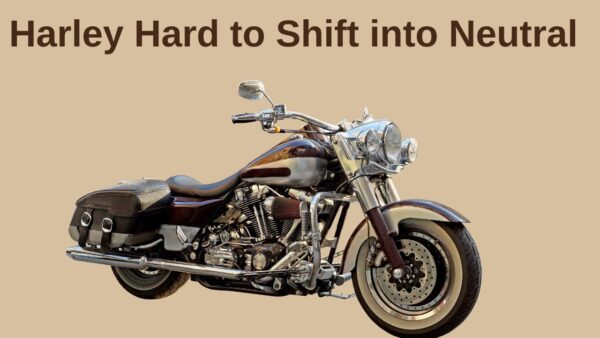The 2020 Low Rider S, despite its appeal to many bike enthusiasts, has been plagued by several problems since its launch.

This powerful Harley-Davidson model, while boasting impressive features and an iconic design, has unfortunately not lived up to expectations in certain key areas.
In this article we’ll shed light on these concerns, offering a comprehensive review of the issues that riders have faced with the 2020 Low Rider S.
Let’s dive in!
Common Problems Of Low Rider 2020
1. Noise from the Engine
The Milwaukee 8 engine, known for its performance, has been praised by Harley Davidson enthusiasts.
However, some riders of the 2020 Low Rider S have reported a distinct humming noise that becomes more noticeable as the engine warms up.
According to the user experiences, the humming noise is not present when the bike is cold.
It becomes noticeable as the engine temperature rises, particularly when engaging or disengaging the clutch, or even when the engine is turned off and the bike is gliding.
Here are a few possible causes for this noise:
- Sometimes overheated brake rotors may become warped, resulting in a humming or grinding noise.
- Worn-out wheel bearings can also produce a humming sound, which should be ruled out as a potential source of the noise.
- Another theory suggests that a too-tight belt on the bike may contribute to the noise.
What can be done?
If you are experiencing this humming noise problem, you should address it promptly. Firstly you should check the brake rotors for signs of overheating or warping.
You can also lift the wheel and spin it, using a screwdriver as a gauge against the swingarm or front end to check for flatness while turning the wheel.
2. Issues with Lifters Sinking
Lifter sinking in the 2020 Low Rider S can also lead to various problems that affect the performance and longevity of your Low Rider.
So, it is essential to address these issues promptly to prevent further damage and ensure a smooth riding experience.
Here are some common issues:
When lifters sink, they fail to maintain their position, resulting in improper valve timing. This can lead to a loss of engine power, causing reduced acceleration and overall performance.
If you notice your 2020 Low Rider S lacking power, it could be a sign of the lifter sinking.
A sinking lifter can also cause tapping or ticking noises from the engine, especially during startup or at low speeds.
These unusual sounds may indicate that the lifters are not functioning properly and require attention.
If left unchecked, lifter sinking can lead to more severe engine problems. This includes the risk of bent push rods or damaged cam lobes, which can be costly to repair.
In order to avoid extensive engine damage, you should address lifter sinking in a timely manner.
How you can Prevent this Problem
It is important to adhere to a regular maintenance schedule for your motorcycle. This includes changing the engine oil at recommended intervals and inspecting the lifters for signs of wear or malfunction.
You should also use the recommended grade of engine oil; as it can prolong the lifespan of the engine components.
If you discover a sinking or malfunctioning lifter, you should replace it as soon as possible.
3. Aftermarket Rocker Arm
When it comes to the rocker arm in your motorcycle engine, its role in maintaining smooth valve operation is crucial.
Sometimes, you might opt for aftermarket parts to improve performance or replace worn-out original parts.
However, for the 2020 Low Rider S, there are specific concerns related to aftermarket rocker arms that should be addressed.

Here are a few concerns with the aftermarket rocker arm:
It’s important to note that some aftermarket rocker arms may not be perfectly compatible with the 2020 Low Rider S.
This can result in performance issues or even long-term damage to your motorcycle. One important consideration is that using aftermarket parts can potentially void the manufacturer’s warranty.
So, before making any modifications, you should be aware of this and consult with your dealer or the manufacturer.
The quality of aftermarket parts can also vary significantly, including rocker arms. While some may offer superior performance, others may be of lower quality.
This can lead to premature wear and tear or other mechanical issues in your motorcycle.
How to Choose Aftermarket Rocker Arms:
Firstly you should research and choose reputable brands. When you’re selecting aftermarket rocker arms, choose brands that have a reputation for producing high-quality parts.
You can also seek advice from mechanics or other riders who have experience with the specific aftermarket rocker arm you are considering.
After installing aftermarket rocker arms, you should be attentive to any changes in your motorcycle’s performance or sound.
If you notice any abnormalities, you should address them promptly to avoid potential issues down the road.
4. Riding Position Issues
Some riders have mentioned that they feel the need to stretch out to reach the handlebars, which causes discomfort and a forward-leaning posture.
Even with modifications like pull-back bars, risers, and a different seat, some riders still find themselves reaching too far.
On the other hand riders with longer arms have felt that the handlebars are a bit of a stretch. Rolling them back a few inches can provide some relief and improve comfort.
Riders who purchased the bike in its stock configuration, have reported discomfort with the riding position.
Interestingly, those who tried bikes at dealerships with modifications such as 10″ risers found the riding position to be more comfortable.
Some riders experience a tingling sensation in their fingers after a long ride, possibly due to the strain of reaching for the handlebars.
Solutions and Adjustments
You might find relief by making adjustments such as using pullback risers, rolling the handlebars back, or changing the seat.
Brands like Lucky Daves and Thrashin Supply offer handlebar and riser options with more pullback, which provides you with a more comfortable riding experience.
5. EPA Controversy
Harley Davidson faced a significant controversy with the Environmental Protection Agency (EPA) over their 2020 Low Rider S model.
This controversy arose due to concerns about the bike’s emission levels and their compliance with EPA standards.
The EPA ensures that vehicles, including motorcycles, meet specific environmental standards.
The 2020 Low Rider S came under scrutiny for potentially exceeding the permissible emission levels set by the EPA.
Harley Davidson, like many other manufacturers, offers performance-enhancing products called “super tuners.”
These tuners can enhance a motorcycle’s performance but may also lead to increased emissions, which may not comply with EPA standards.
Faced with potential legal consequences and fines, Harley Davidson decided to cooperate with the EPA.
The company agreed to repurchase and destroy the super tuners that violated the Clean Air Act.
So, Harley Davidson committed to investing in projects aimed at mitigating the pollution caused by their products.
Final Thoughts
The 2020 Low Rider S has its share of issues; its heavy weight affects its manoeuvrability, which makes it less suitable for beginners.
The high seat height could pose a challenge for short riders. Its fuel economy is somewhat disappointing for long-distance riders.
The absence of advanced riding aids may dismay tech enthusiasts, and the high price tag could discourage budget-conscious buyers.
Despite these drawbacks, the bike still holds appeal for those who prioritize power and style.
FAQs
What is the mileage of lowrider s?
The mileage of Low Rider S is approximately 43.4 miles per gallon (MPG). This data is based on real-world fuel economy data from users.
What is the top speed of the low rider s?
The top speed of the Low Rider S is approximately 110 mph.
Does modifying Low Rider S exhaust system void the warranty?
Yes, modifying the Low Rider S exhaust system can void the warranty.
What are the benefits of using a Dynojet Powervision tuner?
The Dynojet Powervision tuner adapts to any changes made to the motorcycle, offers an autotune feature, and enhances the bike’s performance significantly.
Is the stock ECU sufficient for tuning after modifications?
No, the stock ECU may have limitations, and for significant modifications, it’s recommended to use advanced tuners for better performance.
You may love to read!
Harley Sportster 1200 Problems
2005 Heritage Softail Problems

Ahtsham Younas is a passionate blogger and content writer. He loves to ride motorcycles and learn the mechanical process behind the motorcycles.
He has been writing articles in the motorcycle industry since 2019 and has learned many things about motorbike niches.


